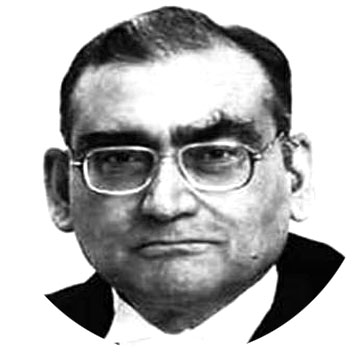Justice Markandey Katju
THE present Indian farmers’ agitation has been going on for almost 100 days now, with the agitating farmers still assembled on the Delhi border roads.
Their talks with the Indian Government have failed, with the latter refusing to accept their demands of withdrawing the three farmers laws and make MSP (Minimum Support Price) statutory.
The farmers have resorted to a tractor parade on 26 January (Indian Republic Day), blocking roads and trains, fast, etc but the government is adamant not to cave in to their demands.
The leaders of the 40 farmers organisations, who have formed a Coordination Committee called the Kisan Ekta Morcha, are now holding rallies in the rural areas, and have gone to several states to muster support there ( particularly in states where state assembly and panchayat elections will be held shortly ).
Their thinking is that the BJP will only relent if the agitation hurts them at the polls.
My own assessment is that though the Indian farmers’ agitation has, no doubt, made a great achievement by uniting people of different religions and castes, it will never achieve its goal of getting MSP for the farmers within the present political and social system. Let me explain why.
If statutory MSP for farm products are fixed by the government, they will obviously have to be high, due to the pressure of farmers, whom the government would not like to displease.
Farmers are 60-65% of India’s population of 1350 million, i.e. about 750 million, which is a huge vote bank.
But fixing high MSP will mean that businessmen will be reluctant to buy farm products, as it will give them little profits. So the government will have to buy it at such high prices, which means at a huge loss.
It is doubtful the Indian government can bear such losses for long (presently the Indian govt only buys 6% agricultural products in India at MSP).
I submit that the solution to the Indian farmers problems lie outside the present political and social system prevailing in India.
The farmers’ agitation has achieved all it could achieve (ie uniting the Indian people) and it can achieve nothing more.
At most it can cause reverses to the BJP in forthcoming elections, but that only means that one set of crooks and deceivers, as most Indian politicians are, will be replaced by another. Nothing fundamental will change by this for the farmers or the rest of society.
These may sound harsh and bitter words, but it is time someone spoke the truth. It is only by a total change in the present political and social system in India that our farmers, as well as other sections of society, can prosper and have decent lives.
India has parliamentary democracy, but this runs largely on caste and religious vote banks (as everyone knows).
Casteism and communalism are feudal forces, which have to be destroyed if India is to progress, but parliamentary democracy further entrenches them.
So obviously some alternative to parliamentary democracy has to be thought out and created.
What the farmers agitation has, however, achieved is to smash the barriers of caste and religion.
This itself is a great and historical step forward, since most earlier attempts to unite the Indian people had failed.
Most agitations till now were either religion based, eg the Ram Mandir agitation, or caste based, e.g. the Jat, Gujar and Dalit agitations. The Anna Hazare agitation against corruption had fizzled out.
The farmers’ agitation can therefore be conceived as the spark which will in a few years time set the prairie ablaze.
It marks the beginning of the Indian people’s Long March of 10-15 years or so, the process which will culminate in setting up of an alternative political and social order under which the Indian masses gradually become prosperous, enjoying a high standard of living women and decent lives.
—The writer is former judge, Supreme Court of India.










